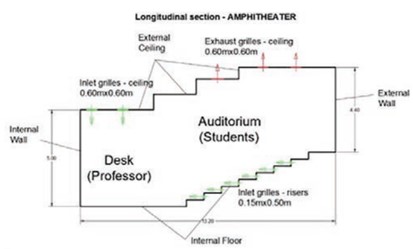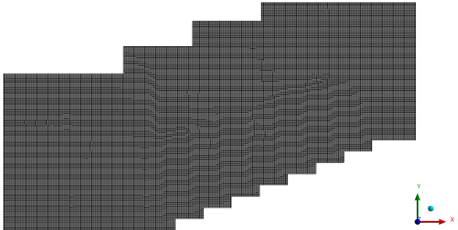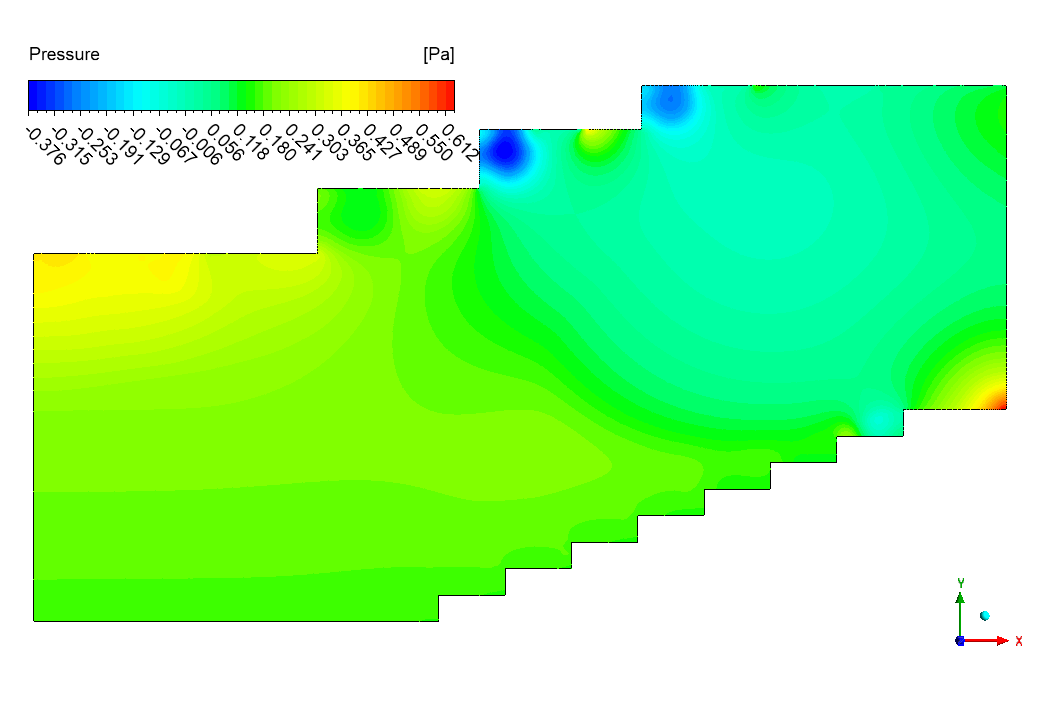HVAC System Of Amphitheater CFD Simulation, ANSYS Fluent Training
HVAC System Of Amphitheater CFD Simulation, ANSYS Fluent Training
- Upon ordering this product, you will be provided with a geometry file, a mesh file, and an in-depth Training Video that offers a step-by-step training on the simulation process.
- For any more inquiries regarding the product, please do not hesitate to reach out to us at info@CFDLAND.com or through our online support assistant.
€140 Original price was: €140.€65Current price is: €65.
The functionality of the HVAC system and other building services is critical for all types of buildings, but especially for places with dense populations. In this study, the functioning of the HVAC system for a college amphitheater—which doubles as a conference hall—is examined under steady-state settings. Based on the reference paper “ HVAC system functionality simulation using ANSYS-Fluent”, the CFD study is conducted.

Figure 1: Longitudinal section of amphitheater
Simulation Process
The audience can accommodate roughly 100 persons, divided into 12 rows of seats. Every row is positioned one step higher than the one before it. The schematic of the amphitheater is given in Figure 1 (reference paper). The model is initially designed using the Design Modeler and then discretized with the structured grid. The mesh of the model was realized using ANSYS-Meshing, with refinements near the walls. The temperature of the conditioned air and the mass flow inlet are equivalent to the HVAC system’s airflow and serve as the boundary conditions at inlet sections. The treated air has a temperature of roughly 20 °C in the winter and 24 °C in the summer.

Figure 2: Structured grid of 2D model of amphitheater
Post-processing
The amphitheater’s HVAC simulation shows that the top levels have most of the air circulation. The air delivered from the HVAC inlets travels throughout these upper layers efficiently, according to the velocity contour, before returning to the bottom surfaces. The amphitheater’s temperature is kept comfortable thanks to this airflow system. However, the research reveals a temperature gradient, with the lower levels and the presenter’s area being substantially warmer than the top levels, which are usually where students are sat. The direct effect of the air inlets is responsible for the cooler environment in the higher parts, which keeps the amphitheater’s total thermal environment balanced while creating a comfortable ambiance for the audience.
We pride ourselves on presenting unique products at CFDLAND. We stand out for our scientific rigor and validity. Our products are not based on guesswork or theoretical assumptions like many others. Instead, most of our products are validated using experimental or numerical data from valued scientific journals. Even if direct validation isn’t possible, we build our models and assumptions on the latest research, typically using reference articles to approximate reality.
Yes, we’ll be here . If you have trouble loading files, having technical problems, or have any questions about how to use our products, our technical support team is here to help.
You can load geometry and mesh files, as well as case and data files, using any version of ANSYS Fluent.
€135 Original price was: €135.€85Current price is: €85.

€130 Original price was: €130.€115Current price is: €115.

€110 Original price was: €110.€65Current price is: €65.

€240 Original price was: €240.€125Current price is: €125.

€120 Original price was: €120.€65Current price is: €65.

€120 Original price was: €120.€75Current price is: €75.


















Reviews
There are no reviews yet.